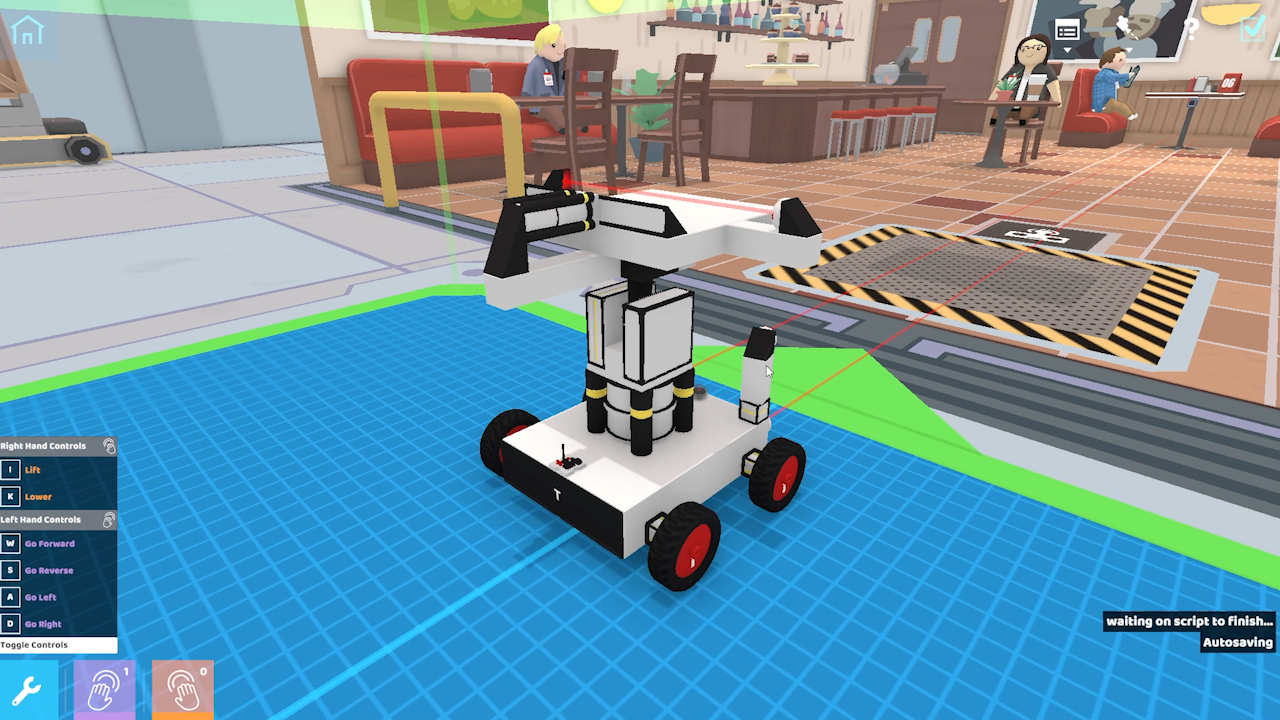Hello, RoboProgrammers!
Last week, we recapped our time at the OTK Game Expo and our plans for Steam Next! Today, we’re talking more about the different sensors you can use for automated robots in RoboCo!
However, before we get into the blog, we wanted to remind you that this weekend is your LAST CHANCE to play our demo before it goes away on June 20, 2022! If you’ve been itching to make some complicated robots, experience the campaign first-hand, or learn more about the wonderful world of automating robots with Python, head to our Steam Page and download the demo today!
What Are Sensors?
Sensors are programmable parts that allow a robot to interpret the physical world into processable data. You could think of them as the robot equivalent to our eyes or ears. The robot can be instructed via code to take actions based on the sensor data it receives, which is what allows a robot to complete tasks on its own (like delivering a sandwich across a crowded restaurant or launching a soda can across a room).
What Type of Sensors Are in RoboCo?
Because there are so many different tasks and environments to tackle in RoboCo, we wanted to start with a wide variety of sensors! The ones that are currently available to players are listed below:

How Do I Use These Sensors?
To use these sensors, you first add them to your robot. Then, as you’re writing your Python code, you can use our custom API documentation to write code that allows you to control these sensors.
Once you upload your Python code into RoboCo via the microcontroller, you can map your sensors to specific ports. You can either do this automatically via the Auto-Assign Button or manually like in the example below.
We know that may sound like a lot, but don’t worry! Our team has already made a guide about loading scripts and assigning ports in a previous devblog called A Guide to Robot Programming. Check it out if you want to learn more about the microcontroller and how we use it to add scripts to RoboCo!
How Powerful Are These Sensors?
Thanks to the multitude of available sensors, we’ve been able to design and automate robots capable of completing challenges with the press of a button! Some of our favorite examples from the team are down below!
We also encourage players designing their automated robots in the demo to share their creations with us in the Official RoboCo Discord. It’s delightful to see what you all are making, and our dream is to see members of our community get excited about coding and help each other so we can all have fun while becoming better RoboProgrammers!
And that’s it for this week’s devblog! Have you enjoyed programming robots in RoboCo? Let us know on Discord and/or social media. Also, make sure to download the RoboCo demo before it goes away on June 20, 2022, if you haven’t already! Next week, we’re revealing some prehistoric creations in a new installment of Check Out Our Robots – Dinosaur Edition! 🦖
For the latest news on RoboCo, follow us on Twitter, YouTube, Facebook, Instagram, and TikTok! You can also connect with other community members and us by joining our official Discord and Reddit!
Don’t forget to add RoboCo to your Steam Wishlist!
